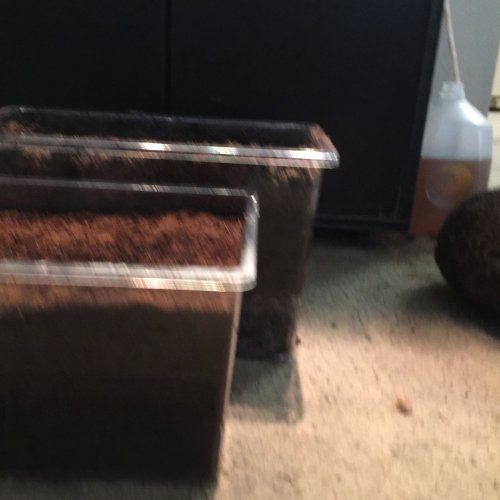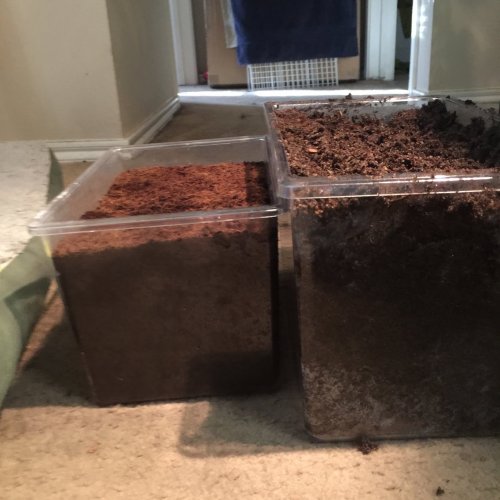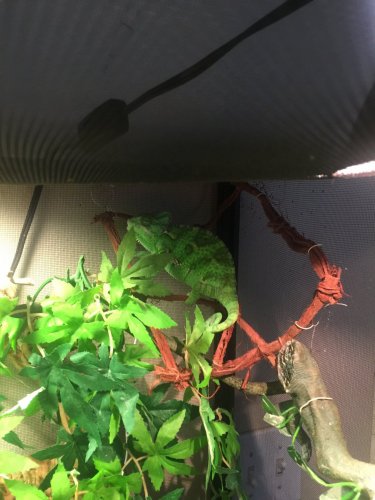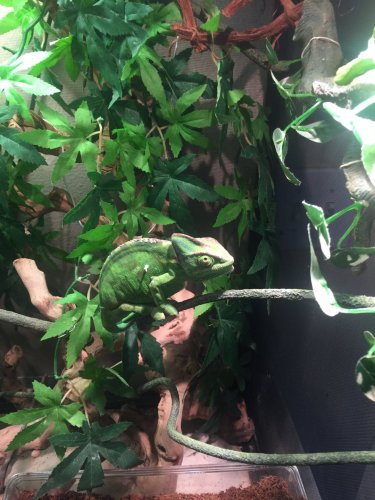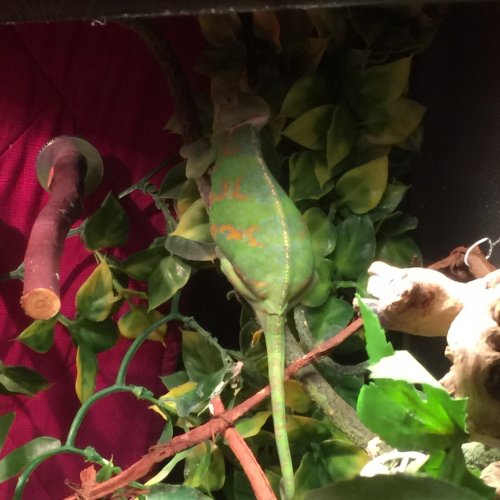Ladythrasher89
Member
Ok so I have tried a few times in the past to get answers about the best way to get a female chameleon to lay eggs. I have taken her to the vet twice now and the vet said she has eggs she can see (about 40) last time she never laid any eggs just stopped displays and started eating again. The vet thought maybe she just wasn't ready to lay because she never did and never became egg bound. This time, however, she is noticeably gravid and spends a lot of time low in the cage. I had a large cricket keeper full of cocohusk dirt substrate she has been sitting on the edge often in the mornings. So today, fearing the container I had in there is too small, I bumped her up to a larger 3 gallon fish tank sized plastic cricket keeper, is 9.7" h x 14.5" L x 9.7" w. It is filled with a 50/50 mix of clean playsand and organic top soil. I have been covering her cage with a blanket around the front sides that face out. What else can I do?! She is approximately a year old, and this is her first clutch. Please help.

